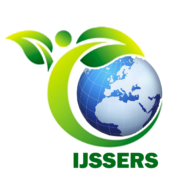Lanna Oral Buddhist Literature: Identity, Development, and Value-adding in a New Dimension
This study was aimed at 1) analyzing the identity and development of Lanna oral Buddhist literature, 2) analyzing the contents and principles in propagating Buddhism for new generations, and 3) proposing the guidelines for value-adding and management of Lanna oral Buddhist literature in a new dimension. The sample consisted of 1) the sample who responded to the questionnaire: 152 monks and 152 deacons, and 2) the interviewees: 2 monks, 2 deacons, and 2 scholars. Research tools used to collect data consisted of 1) questionnaire, where percentage, statistics, mean, and standard deviation were used for data analysis, and 2) structured interview, where a descriptive analysis was conducted for data analysis.
The results indicated that 1) the identity of literature included indigenous preaching, Ventan (alms offering), asking for forgiveness from the Triple Gem and others, Lanna proverbs, asking for forgiveness from dead bodies, storytelling, morals, and Tan praying (folk praying), and the development of literature stemed from a mix with current events, changing based on the community context, integration with other local languages, adaptations over time, and compliance with the regime, 2) contents in the propagation of Buddhism included diligence, education, learning, use of intelligence to solve problems, folk tales, lives of the people, and dharma-based fairy tales, and 3) guidelines for literature value-adding included creating a new body of knowledge from oral Buddhist literature, organizing a “Local Northern Preaching” short course, preparing a handbook on oral Buddhist literature, promoting the learning for children, youth, and higher education, providing a subject in local Buddhist literature, preparing dharma-based Lanna books and tales, teaching and learning on oral Buddhist literature from the secondary education, and producing books on oral Buddhist literature.

